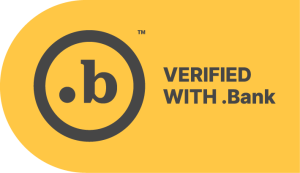Life can be unexpected. Accidents, emergencies and repairs never come at a good time. Even if you plan for your financial future, sometimes you will have an expense you didn’t anticipate.
Many people are unprepared for urgent pop-up expenses. About 56% of Americans can’t pay for an unexpected $1,000 bill with their current savings, according to a Bankrate telephone survey from January 2022.
One in four Americans (25%) don’t have an emergency fund. Without emergency savings at their disposal, these individuals turn to credit cards or loans to pay for unforeseen expenses.
You can help your future self by setting aside money for emergencies.
What Is an Emergency Savings Fund?
An emergency savings fund is money set aside for unplanned expenses.
As you build your emergency fund, you should set rules regarding what counts as an emergency expense. Emergency savings are not meant to fund family vacations or weddings. You should only draw from this fund in a financial emergency.
Examples of emergencies include:
- Loss of employment
- Medical issue
- Car accident or repair
- Natural disaster
Where to Keep an Emergency Fund
Since you’ll need this money fast, your emergency fund must be easily accessible. You can start building an emergency fund in a savings account that’s separate from your other bank accounts.
Avoid adding money to a CD (certificate of deposit) or IRA (individual retirement account) for emergency use. These accounts have early withdrawal penalties. Instead, save these accounts for retirement and general savings.
A savings account with a high interest rate and easy access is the best place for your emergency fund.
Reasons Why You Need an Emergency Fund
Finding ways to save can be difficult. It is hard to set aside extra money, especially if you live paycheck to paycheck or are saving for a specific goal like a house or car. Setting aside money each month—no matter how much—will help you in the future.
-
It Pays for Necessities
With an emergency fund, you pay yourself for situations that may occur in the future. Emergency savings provide a cushion, absorbing some, if not all, of a financial shock.
If you lose your job, your emergency savings can help you pay for living expenses until you find another position. Similarly, if you get in an accident or need a critical home repair, your emergency savings help you cover it.
The Federal Reserve reports that 20% of adults had a major or unexpected medical expense in the last 12 months. An emergency fund readies you for the unexpected and ensures you can get the care you need.
-
It Helps You Avoid Debt
An emergency can hold you back or push you further into debt if you don’t have savings. One financial shock makes it harder to save for the future. Those without emergency funds must charge credit cards or take out loans to pay for the expense. Instead of putting away savings, you must then pay off debt.
Consumer debt increased 5.4% from 2020 to 2021. The average American owes $96,371, which includes personal loans, credit card charges, mortgages and student loans. Emergency funds help you avoid obtaining additional debt.
-
It Doesn’t Trigger Withdrawal Penalties
Some people are forced to dip into specialized savings and retirement accounts when an emergency strikes. Taking funds from a CD, IRA or 401(k) early provokes withdrawal penalties. These penalties may require you to forfeit interest or pay a dollar amount.
For example, withdrawing early from an IRA may subject you to an additional 10% tax if you’re under 59 ½. The IRS lays out a few exceptions to the 10% rule, including those paying health insurance premiums while unemployed.
Having an emergency fund at your disposal helps you avoid withdrawing from these accounts. That way, you don’t lose interest or have to pay a steep fee.
-
It Provides Peace of Mind
It’s comforting to know you have a buffer. An emergency savings fund is there in case you need it. Many Americans accessed their emergency savings in the first year of the COVID-19 pandemic. Nearly 40% of those who had emergency funds in March 2020 used them.
In July 2021, about 51% of Americans reported having less than three months’ worth of expenses saved, and a quarter had six months’ worth of expenses saved. Today, more than half of Americans are worried about their emergency funds.
How Much Should You Have in an Emergency Fund?
You know you need an emergency fund, but how much should you save?
The answer depends on your circumstances. Generally, you should aim to stash away three to six months’ worth of basic living expenses.
A dual-income family may try to save only three months, or three to six months, of living expenses. If one earner lost their job, the emergency fund could serve as a temporary second income.
Single earners may want to save more since they don’t count on another’s income. A good goal for a single earner is six to nine months’ worth of living expenses.
Everyone’s circumstance is different. If you live paycheck to paycheck, saving any amount is helpful. Start small. Even an extra $500 can help you in many scenarios.
How to Build an Emergency Fund: Getting Started
You can start an emergency fund by opening a separate savings account. Use this savings account solely for building your emergency savings. Then, set a goal for yourself.
Each month, dedicate some of your earnings to your emergency fund. Automating the process can make it easier to save consistently.
If you are paid via direct deposit, ask your employer to split your paycheck, so a set amount enters your savings account each pay period. You can also schedule recurring transfers from your checking account to your savings account.
In addition to your monthly contributions, you should look for one-time opportunities to save. Cash gifts and tax refunds are examples of money that can help build emergency savings quickly.
Are you ready to create a savings fund? Contact Community Point Bank to open a savings account today. Our streamlined process and attentive service make it easy to open a new account and start saving.
Interested in other services? Experience top-tier customer service at our local bank. Explore our personal banking and loan services for more information.




